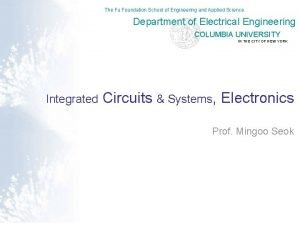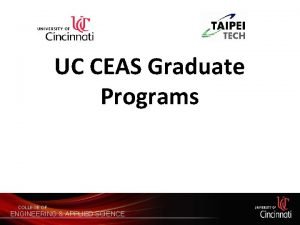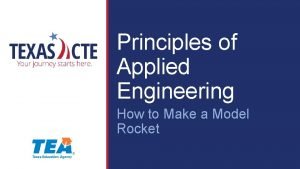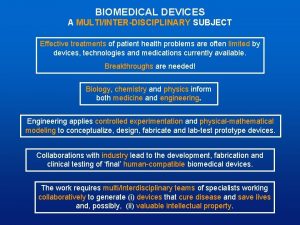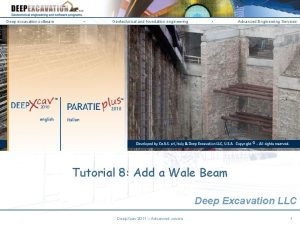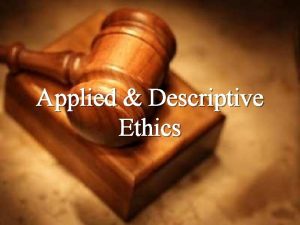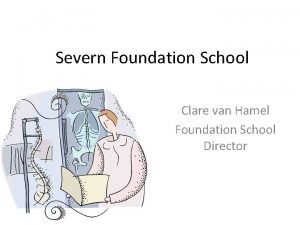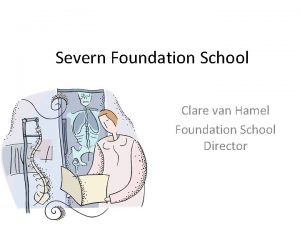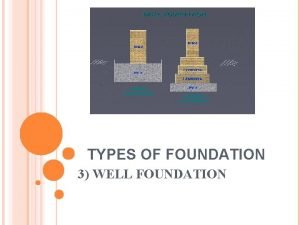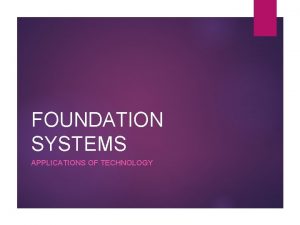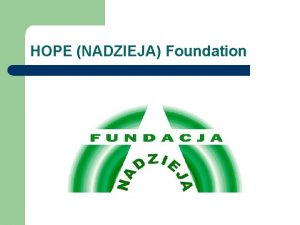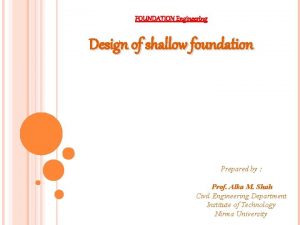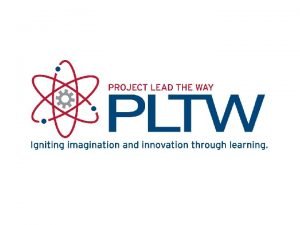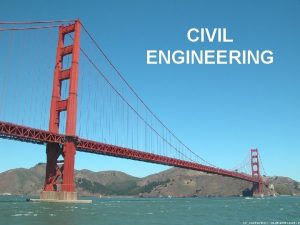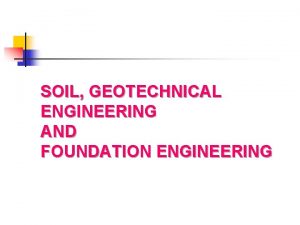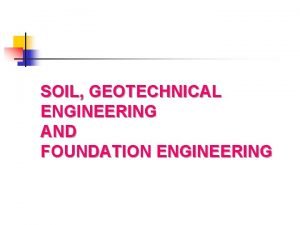The Fu Foundation School of Engineering and Applied














- Slides: 14

The Fu Foundation School of Engineering and Applied Science Columbia University Science and Engineering in the Columbia Core Timothy Cross AKU-FAS Core Curriculum Workshop Babson Conference Center Friday, 27 February 2009

Talking Points School Visions q Programs and Requirements q Core Course Characteristics q Frontiers of Science (Columbia College) q First-Year Design Course (Columbia Engineering) q The Fu Foundation School of Engineering and Applied Science Columbia University 2

School Visions Columbia College q Provide education that allows students to have … 1. Intellectual mobility 2. Social mobility 3. Career mobility Columbia Engineering q Prepare students so they are … 1. Technologically adept 2. Liberally educated 3. Socially engaged 4. Entrepreneurial The Fu Foundation School of Engineering and Applied Science Columbia University 3

Programs and Requirements Columbia College Core q q q q Contemporary Civilization (2 semesters; 8 credits) Literature Humanities (2 semesters; 8 credits) Art Humanities (1 semester; 4 credits) Music Humanities (1 semester; 4 credits) Frontiers of Science (1 semester; 4 credits) University Writing (1 semester; 3 credits) Global Core (2 semesters; 6 -8 credits) Core requirements comprise 10 semesters during first two years, with 8 semesters common to all students. The Fu Foundation School of Engineering and Applied Science Columbia University 4

Programs and Requirements Engineering School Core q q q “First-Year Design Course” (1 semester; 4 credits) At least one professional-level course (1 semester; 3 credits) Required Non-Technical Courses (16 -18 credits) § University Writing (1 semester) § Contemporary Civilization (2 semesters) or Literature § q Humanities (2 semesters) or Global Core (2 semesters) Art Humanities (1 semester; 4 credits) or Music Humanities (1 semester; 4 credits) Principles of Economics (1 semester; 3 credits) § Elective Non-Technical Courses (9 -11 credits) The Fu Foundation School of Engineering and Applied Science Columbia University 5

Programs and Requirements Shared Courses Frontiers of Science Literature Humanities Contemporary Civilization Global Core Music Humanities Art Humanities University Writing Columbia College First-Year Design Course Columbia Engineering The Fu Foundation School of Engineering and Applied Science Columbia University 6

Programs and Requirements Sample College Core Schedule First Year Sophomore Year Fall Spring Literature Humanities Contemporary Civilization Frontiers of Science* University Writing* Arts Humanities* Music Humanities* Global Core* *Can be taken either fall or spring semester The Fu Foundation School of Engineering and Applied Science Columbia University 7

Programs and Requirements Sample SEAS Core Schedule First Year Sophomore Year Fall Spring First-Year Design Course 1 Professional. Level Course 1 Contemporary Civilization 2 University Writing 1 Principles of Economics 1, 3 Art Humanities 1, 4 Professional. Level Course 1 1 Can be taken either fall or spring semester Could substitute either Literature Humanities or Global Core 3 Can be satisfied with AP Economics 4 Could substitute Music Humanities 2 The Fu Foundation School of Engineering and Applied Science Columbia University 8

Columbia College Core Frontiers of Science q q Attempt to create science course analogous to core courses in social sciences and humanities Course-wide lectures § Taught by senior faculty -- 4 modules per § § q semester Fill role of common source material along or common text Address big, general questions Individual discussion sections § Taught by mix of faculty and Columbia § § q Science Fellows (postdoctoral students) Fill role of small core classes Address practical, more detailed problems Part of three-course science requirement The Fu Foundation School of Engineering and Applied Science Columbia University 9

Columbia College Core Frontiers of Science Ambitions “A one-semester course that integrates modern science into the Core Curriculum to change the way students think about questions of science and about the world around them. ” q Content ambitions § Multidisciplinary -- different § q scientific disciplines contribute Show “cutting edge of science” -focus on recent breatkthroughs Skill ambitions § “Scientific habits of mind” § Common scientific methods, such as “back-of-the-envelope” calculations and the use of proxies The Fu Foundation School of Engineering and Applied Science Columbia University Scientific Habits of Mind 1. A Sense of Scale 2. Expecting the Improbable 3. Lies, Damned Lies, and Statistics 4. Discoveries on the Back of an Envelope 5. Insights in Lines and Dots 6. Correlation, Causation … Confusion and Clarity 7. What is Science? 10

Columbia College Core Frontiers of Science Modules q Fall 2008 § Evolution § Astronomy § Climate § Biodiversity q Spring 2009 § Astronomy § Climate § Quantum § § § The Fu Foundation School of Engineering and Applied Science Columbia University Mechanics Chemistry Biochemistry Brain and Behavior 11

Columbia Engineering Core First-Year Design Course q Required course for all first-year Engineers § Four sections of ~45 students per semester § Instructional team (faculty, graduate fellows) q Both hard and soft skills § Technical skills (Maya, CAD, prototyping) § Professional and soft skills (teamwork and project management, budgeting, interacting with clients, communications skills) The Fu Foundation School of Engineering and Applied Science Columbia University 12

Columbia Engineering Core First-Year Design Course q Students work on real projects from community clients § Emphasizes open-ended problem§ q solving Students work on more than 70 projects per year Projects have focused on three main area § Adaptive technologies § Urban problems § Educational challenges q Client feedback is essential in evaluating student performance The Fu Foundation School of Engineering and Applied Science Columbia University 13

Columbia Engineering Core Ambitions q Non-technical requirement aims to produce “well rounded” engineers § § q Shared Core courses with the College Shared liberal arts programs with the University Community-based learning courses and programs aim to support socially engaged engineers § § § Required in First-Year Design Course; optional thereafter Projects are community selected Project success determined by tangible results for clients The Fu Foundation School of Engineering and Applied Science Columbia University In 2007 -2008, more than 600 students worked on 100 projects for local CBOs, businesses, nursing homes, schools, and churches. In 2008 -2009, we expect to have close to 800 students working on community-based learning projects. 14
 Fu foundation school of engineering
Fu foundation school of engineering Uc ceas
Uc ceas Pad foundation section
Pad foundation section Foundation standard 1 academic foundation
Foundation standard 1 academic foundation Applied geotechnical engineering
Applied geotechnical engineering Principles of applied engineering
Principles of applied engineering Gerling applied engineering
Gerling applied engineering Foundation engineering lecture notes
Foundation engineering lecture notes Deep excavation software
Deep excavation software Forward engineering and reverse engineering
Forward engineering and reverse engineering Hát kết hợp bộ gõ cơ thể
Hát kết hợp bộ gõ cơ thể Ng-html
Ng-html Bổ thể
Bổ thể Tỉ lệ cơ thể trẻ em
Tỉ lệ cơ thể trẻ em Voi kéo gỗ như thế nào
Voi kéo gỗ như thế nào
